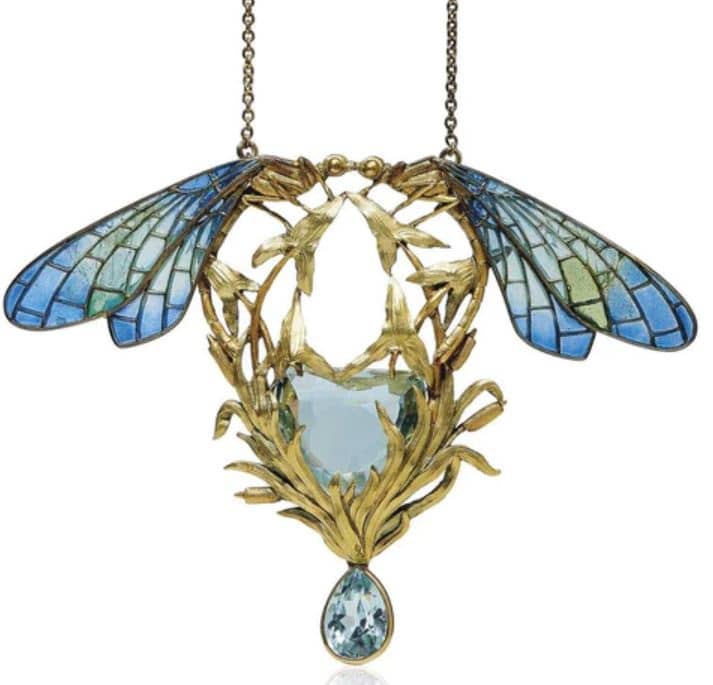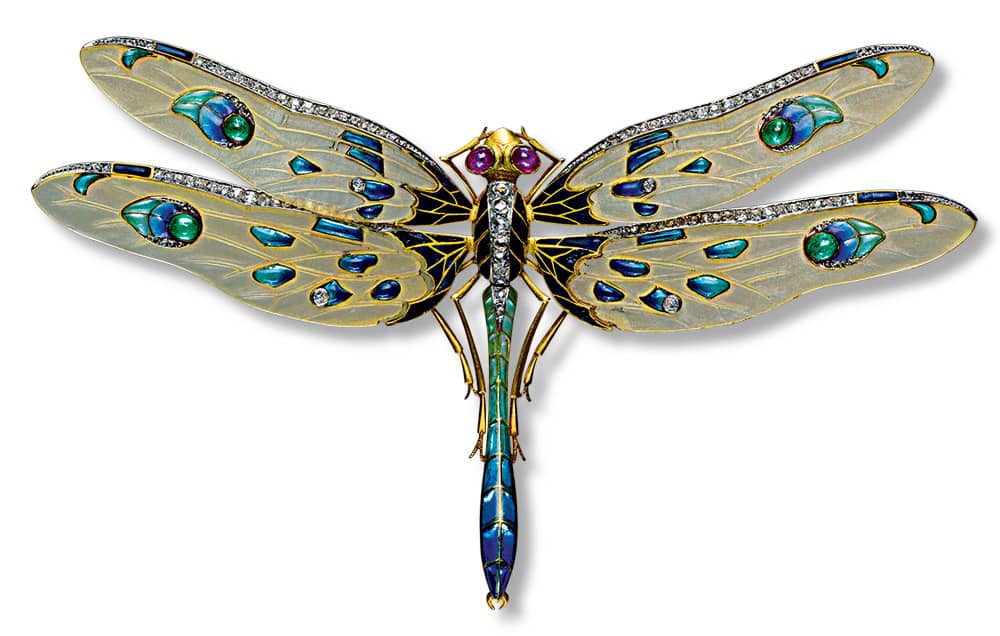Are you interested in learning about the influence of Art Nouveau in jewelry design? If so, you have come to the right place. In this article, we will explore the history of Art Nouveau, its impact on jewelry design, and how it has influenced the trends of today. We will examine the distinctive characteristics of Art Nouveau jewelry and how it has been adapted over the years. So, what is the influence of Art Nouveau in jewelry design? Read on to find out!
1. The Origins of Art Nouveau Jewelry Design
Art Nouveau was an artistic movement that emerged in the late 19th century and lasted until the early 20th century. It was characterised by its use of flowing lines, natural forms, and decorative motifs. Art Nouveau jewelry design was heavily influenced by this movement, and it became popular in Europe and America during this time.
The origins of Art Nouveau jewelry design can be traced back to the Arts and Crafts movement in England. This movement was a reaction against mass-produced goods and emphasised the value of handmade objects. Jewelry designers in this movement were inspired by nature and often used materials such as enamel, glass, and semi-precious stones.
Art Nouveau jewelry design took this emphasis on nature and decoration to the next level. Designers were inspired by the natural world and incorporated elements such as flowers, insects, and animals into their designs. They also used new techniques such as plique-à-jour enamel and the use of asymmetrical shapes to create unique and eye-catching pieces.
To learn more about Art Nouveau jewelry design, you can visit the Victoria and Albert Museum’s website, which has a collection of Art Nouveau jewelry. You can also read more about the Arts and Crafts movement on the website of the William Morris Society.

2. The Aesthetics of Art Nouveau Jewelry
The aesthetics of Art Nouveau jewelry were a revolutionary break away from the traditional jewelry styles of the past. The designer sought to create a look that was more organic and natural, with elements of nature, such as flowers, leaves, and vines, often being used as decoration. Art Nouveau jewelry was often made from gold or silver, and was often adorned with precious and semi-precious stones, such as diamonds, rubies, and sapphires. Art Nouveau jewelry also featured enamel work, which was used to create intricate patterns and designs.
The aesthetic of Art Nouveau jewelry was often asymmetrical and curved. This stood in stark contrast to the more traditional jewelry styles, which often featured symmetrical designs and straight lines. This was a deliberate attempt to create a look that was modern and unique, and to separate it from the more traditional styles of jewelry.
The use of color was also a major feature of Art Nouveau jewelry. Colors such as green, blue, and purple were often used in combination to create striking and vibrant pieces. The enamel work was used to accentuate the colors, creating a unique and eye-catching look.
The influence of Art Nouveau in jewelry design has been felt throughout the years, with many modern jewelry designers still being inspired by its aesthetic. Art Nouveau jewelry continues to be popular today, with pieces being sought after by collectors and fans of the style alike.

3. Popular Art Nouveau Jewelry Makers
Art Nouveau jewelry was a popular style in the late 19th and early 20th centuries. The style is characterized by flowing lines, natural motifs, and the use of non-traditional materials. Art Nouveau jewelry makers were known for their innovative designs and use of materials. Here are three popular Art Nouveau jewelry makers:
- Rene Lalique – Lalique was a French jewelry maker who was known for his use of glass in his designs. He was also known for his use of natural motifs, such as flowers and insects.
- Georges Fouquet – Fouquet was a French jewelry maker who was known for his use of enameling and gemstones in his designs. He was also known for his use of non-traditional materials, such as horn and ivory.
- Archibald Knox – Knox was a British jewelry maker who was known for his use of Celtic motifs in his designs. He was also known for his use of non-traditional materials, such as pewter and enamel.
These Art Nouveau jewelry makers were influential in the development of the Art Nouveau style. Their designs were innovative and helped to establish Art Nouveau as a popular style in jewelry design.

4. Iconic Art Nouveau Jewelry Pieces
The Art Nouveau movement of the late 19th and early 20th centuries had a lasting influence on jewelry design. Many of the iconic pieces created during this period are still celebrated today. Here are four of the most iconic Art Nouveau jewelry pieces:
- The iconic Tiffany Dragonfly Brooch (1899) is a stunning example of Art Nouveau jewelry design. This delicate gold and enamel brooch features a dragonfly with sapphire eyes and diamond-set wings. The dragonfly is set against a backdrop of gold-plated lily pads and water lilies.
- The Tiffany Peacock Brooch (1900) is another iconic piece of Art Nouveau jewelry. This brooch is made of gold, enamel and diamonds, and features a peacock in a detailed setting of feathers and foliage.
- The René Lalique Poissons Brooch (1902) is a classic example of Art Nouveau jewelry design. This stunning brooch is made of gold and enamel, with three gold fish swimming among water lilies. The detail on this piece is exquisite.
5. Art Nouveau Jewelry in Popular Culture
The influence of Art Nouveau in jewelry design is evident in its popularity in popular culture today. Art Nouveau jewelry is often seen on the red carpet, in music videos, and on the runway. Its ornate, graceful lines and shapes, combined with its intricate detailing, make it a favorite among celebrities and fashionistas alike.
The Art Nouveau movement of the late 19th and early 20th centuries has had a lasting impact on jewelry design. Its emphasis on nature, organic shapes, and soft curves has been an inspiration for many modern jewelry designers. The use of gold, silver, and precious stones to create unique and intricate pieces has made Art Nouveau jewelry a timeless classic.
Art Nouveau jewelry is also a popular choice for bridal jewelry. Its delicate, feminine designs and intricate detailing make it the perfect accessory for a bride’s special day. Whether it’s a simple pendant or a more elaborate necklace, Art Nouveau jewelry adds a touch of elegance and sophistication to any bride’s look.
The influence of Art Nouveau can also be seen in the world of fine art. Many modern painters, sculptors, and illustrators have been inspired by the movement, and its influence can be seen in the artwork of many contemporary artists.
From its ornate designs to its timeless beauty, Art Nouveau jewelry has become a staple in popular culture. Its influence can be seen in everything from bridal jewelry to modern art, making it a timeless classic that will continue to be a favorite
6. The Legacy of Art Nouveau Jewelry Design
Art Nouveau jewelry design was a significant movement in the late 19th and early 20th centuries that influenced the jewelry industry in many ways. The legacy of Art Nouveau jewelry design is still present today, with many contemporary designers drawing inspiration from the movement’s organic forms and intricate designs.
One of the most significant aspects of Art Nouveau jewelry design was its use of natural forms and motifs. Designers drew inspiration from nature, incorporating elements such as flowers, leaves, and insects into their designs. This resulted in pieces that were highly detailed and ornate, with a sense of movement and flow that was characteristic of the movement.
Another key feature of Art Nouveau jewelry was its use of new materials and techniques. The movement saw a resurgence of interest in traditional crafts such as enamelling and gem-cutting, as well as the use of new materials such as glass and ivory.
The legacy of Art Nouveau jewelry design can be seen in many contemporary pieces, with designers continuing to draw inspiration from the movement’s organic forms and intricate designs. Whether you’re a fan of vintage jewelry or contemporary pieces, Art Nouveau design is sure to continue to inspire for many years to come.
For more information on Art Nouveau jewelry design, check out this beginner’s guide from the Victoria and Albert Museum.

Conclusion:
Art Nouveau, a movement that emerged in the late 19th and early 20th centuries, has left a profound mark on the world of jewelry design. Characterized by its organic forms, flowing lines, and incorporation of natural motifs, Art Nouveau jewelry is a testament to the era’s fascination with nature and the desire to break away from traditional design norms.
The movement’s emphasis on handcrafted pieces, combined with innovative techniques and materials, resulted in jewelry that was not only visually stunning but also deeply symbolic. Today, the Art Nouveau style continues to inspire designers, ensuring its enduring legacy in the world of jewelry.
